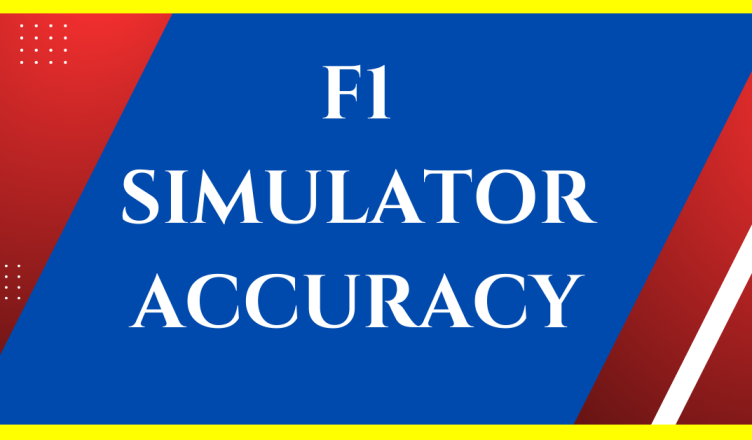Formula One (F1) racing is one of the most prestigious and exciting motorsports in the world. The sport is known for its high-speed, high-tech vehicles and talented drivers. In recent years, the use of simulators has become an integral part of F1 racing, with teams using them to train drivers and test new cars before taking them to the track. However, the accuracy of F1 simulators has been a subject of debate among experts and enthusiasts. In this article, we will explore how accurate F1 simulators are and their role in modern racing.
What are F1 Simulators?
F1 simulators are computer-based systems that replicate the experience of driving an F1 car on a virtual track. They consist of several components, including a motion platform, steering wheel, pedals, and screens. F1 simulators use advanced software to simulate the physics of driving an F1 car, such as the effects of G-forces and tire wear.
There are two types of F1 simulators: fixed-base and full-motion. Fixed-base simulators are stationary, and the driver sits in a stationary cockpit, while the screen and motion platform move. Full-motion simulators, on the other hand, replicate the full range of motion experienced in an F1 car. The driver sits in a cockpit that moves on a hydraulic platform, providing a realistic simulation of the driving experience.
F1 simulators have become an important tool for teams in modern racing. They allow drivers to practice in a safe and controlled environment and help teams test new cars and make improvements before taking them to the track.
How Accurate Are F1 Simulators?
The accuracy of F1 simulators is a subject of debate among experts and enthusiasts. While simulators can provide a realistic driving experience, they are not identical to real-world driving. Several factors affect the accuracy of F1 simulators, including:
- Simulation Software
The accuracy of simulation software plays a critical role in the accuracy of F1 simulators. The software must accurately replicate the physics of driving an F1 car, including the effects of tire wear, aerodynamics, and G-forces.
- Hardware
The hardware used in F1 simulators, such as screens and motion platforms, can affect the accuracy of the simulation. High-quality hardware can provide a more realistic experience, while lower-quality hardware may not be as accurate.
- Driver Input
The accuracy of F1 simulators also depends on the driver’s input. Drivers must provide accurate inputs through the steering wheel and pedals for the simulation to be accurate.
Despite these factors, F1 simulators have become increasingly accurate in recent years due to advancements in technology. Modern simulators use high-quality hardware and simulation software, providing a more realistic driving experience than earlier versions.
Use of F1 Simulators in Motorsports
F1 simulators have become an essential tool for teams in modern racing. They are used for driver training and development, as well as car development and testing.
- Driver Training and Development
F1 simulators allow drivers to practice driving techniques and learn the nuances of specific tracks before taking them to the real world. Simulators can also help drivers improve their reaction times and decision-making skills.
- Car Development and Testing
F1 simulators are used by teams to test new cars and make improvements before taking them to the track. Simulators allow teams to make changes to the car’s setup and test the effects of those changes before committing to them in real-world testing.
While simulators have become an essential tool in modern racing, they do have limitations. For example, they cannot replicate the physical demands of driving an F1 car at high speeds, such as the effects of wind and G-forces on the body. Additionally, simulators cannot replicate the same level of risk and adrenaline that comes with real-world racing.
Criticisms and Controversies Surrounding F1 Simulators
Despite their usefulness, F1 simulators have faced criticism and controversy from drivers and experts. Some of the criticisms include:
- Inaccuracy
Some experts and drivers believe that F1 simulators are not accurate enough to replicate the real-world driving experience, which could lead to drivers developing bad habits.
- Cost
F1 simulators are expensive to develop and maintain, which could put smaller teams at a disadvantage.
- Unfair Advantage
There are concerns that teams with better simulators could have an unfair advantage over their competitors.
There have also been controversies surrounding the use of simulators in racing. For example, some teams have been accused of using simulators to gain an advantage in races by testing new car setups that are not allowed under the rules.
To address these criticisms and controversies, F1 has introduced regulations on the use of simulators in testing and training. These regulations aim to ensure that simulators are used fairly and that teams do not gain an unfair advantage.
Conclusion
In conclusion, F1 simulators have become an essential tool for teams in modern racing. They provide a safe and controlled environment for driver training and development, as well as car development and testing. While F1 simulators are not identical to real-world driving, they have become increasingly accurate in recent years due to advancements in technology.
However, there are criticisms and controversies surrounding the use of F1 simulators. To ensure that simulators are used fairly, F1 has introduced regulations on their use in testing and training.
Overall, F1 simulators have become an integral part of modern racing, providing teams with a valuable tool to improve their performance and gain an edge over their competitors.
